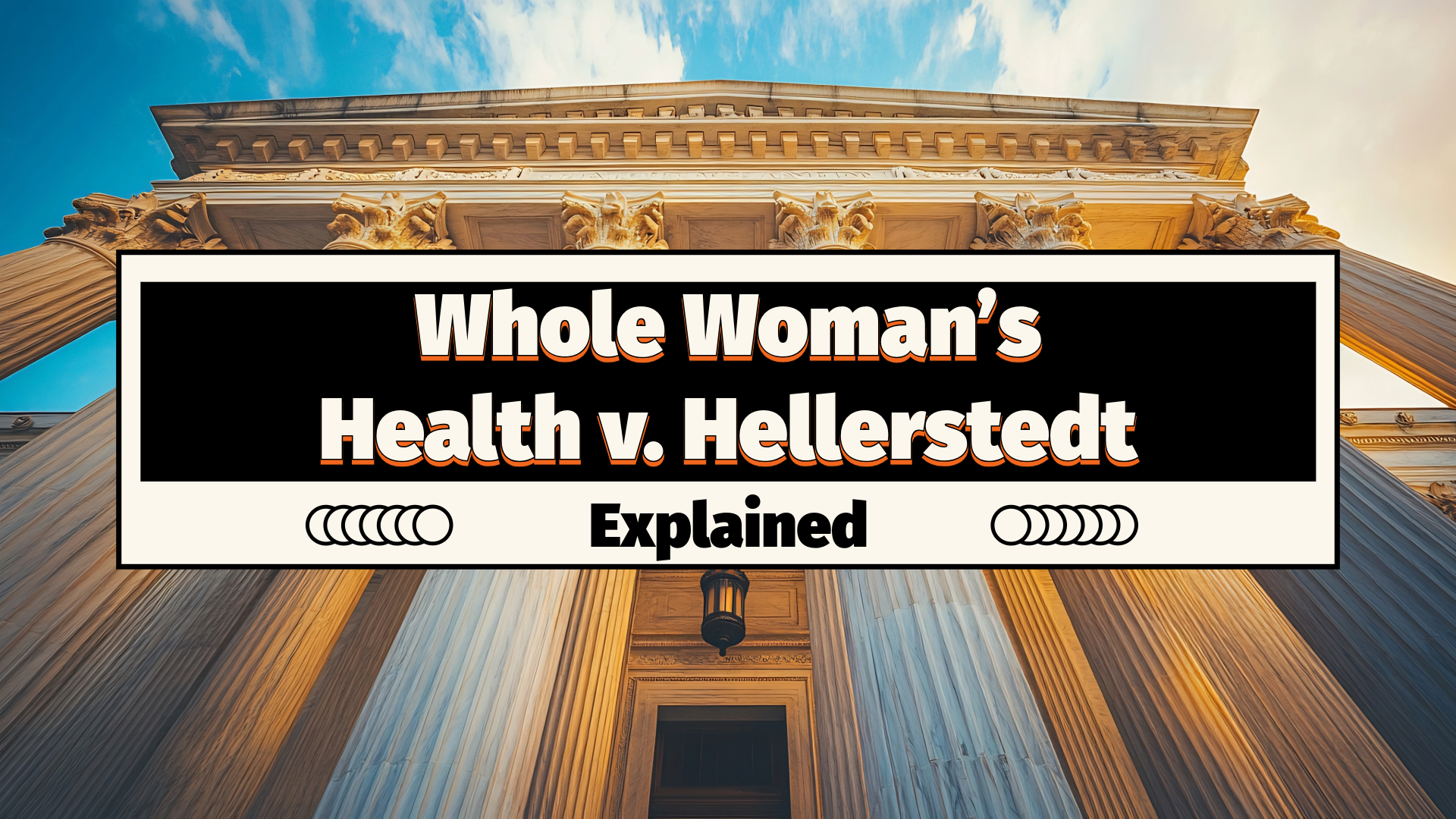Whole Woman’s Health v. Hellerstedt (2016)
TL;DR
- Whole Woman’s Health v. Hellerstedt was a 2016 Supreme Court case that struck down parts of Texas abortion laws.
- The laws required abortion providers to have hospital admitting privileges and clinics to meet surgical center standards.
- The Court ruled these requirements placed an undue burden on abortion access without significant health benefits.
- The decision reaffirmed and clarified the “undue burden” standard set in Planned Parenthood v. Casey (1992).
- It marked a major victory for abortion rights advocates before Roe v. Wade was overturned in 2022.
What it is
Whole Woman’s Health v. Hellerstedt was a landmark U.S. Supreme Court decision in 2016 that invalidated two major provisions of a Texas law (HB2) regulating abortion providers. The Court ruled that the requirements imposed medically unnecessary burdens on women seeking abortions and therefore violated the Constitution.
Why it matters
This case significantly shaped how courts evaluate abortion restrictions under the “undue burden” standard. It emphasized that states must show legitimate health benefits for laws regulating abortion access and not just assert them. The ruling temporarily protected access in many states where similar laws had threatened clinic closures.
How it works / Key concepts
- Undue Burden Standard: The Court reinforced that abortion laws are unconstitutional if they place substantial obstacles in the path of a woman seeking an abortion without providing significant health benefits.
- Texas Law (HB2): The challenged provisions required doctors to have admitting privileges at nearby hospitals and mandated that clinics meet ambulatory surgical center standards.
- Impact: The law had already led to the closure of about half of Texas abortion clinics before being struck down.
- Majority Opinion: Written by Justice Stephen Breyer, the 5-3 decision found that the burdens outweighed any medical justifications.
Examples / Use cases
- The decision prevented similar laws in other states from taking effect, protecting clinic access temporarily.
- Legal precedent from this case was cited in later challenges to abortion restrictions, such as June Medical Services v. Russo (2020).
- It underscored the need for courts to consider both the benefits and burdens of abortion laws.
Limitations and risks
- The decision did not eliminate the “undue burden” standard, which remained subject to interpretation by future courts.
- While it temporarily blocked restrictive laws, the legal and political landscape shifted with new court appointments.
- Its protections were effectively nullified when Roe and Casey were overturned in Dobbs v. Jackson (2022).
FAQ
- What was the core issue in this case? Whether Texas’s admitting privileges and surgical center requirements placed an unconstitutional burden on women seeking abortions.
- What does “undue burden” mean? A legal test that considers whether a law places substantial obstacles in the path of a person seeking an abortion before viability.
- What was the outcome? The Court ruled 5-3 that the Texas provisions were unconstitutional because they imposed burdens without sufficient health benefits.
- Did this case affect other states? Yes, it blocked similar TRAP laws in several other states from being enforced.
Sources
- Oyez. “Whole Woman’s Health v. Hellerstedt.” Oyez.org, 2022. https://www.oyez.org/cases/2015/15-274
- Supreme Court of the United States. Whole Woman’s Health v. Hellerstedt, 579 U.S. ___ (2016). https://www.supremecourt.gov/opinions/15pdf/15-274_new_h315.pdf
- Guttmacher Institute. “TRAP Laws and the Whole Woman’s Health Decision.” 2016. https://www.guttmacher.org/article/2016/06/trap-laws-and-whole-womans-health-decision
- Center for Reproductive Rights. “Whole Woman’s Health v. Hellerstedt.” 2016. https://reproductiverights.org/case/whole-womans-health-v-hellerstedt/







